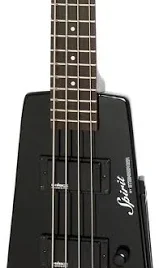Jazz Bass Scale Exercises
Jazz Bass Scale Exercises
Jazz Bass Scale Exercises will help you expand your knowledge and create rich and interesting grooves. Learn these to enhance your sound and command of the instrument.
Major Scale Exercises
The major scale is the foundation of many other scales and modes. Practicing major scales in various keys is essential for any bassist.
Exercise 1: Major Scale in All Positions
- Goal: Play the major scale in all positions up and down the fretboard.
- Method: Start with C major and move through all the keys. Play the scale in open position, first position, second position, etc.
- Example: Play C major (C-D-E-F-G-A-B) starting on the 3rd fret of the A string, then move to the 8th fret of the E string, and so on.
Exercise 2: Two-Octave Major Scale
- Goal: Develop range and finger dexterity by playing two-octave scales.
- Method: Start on the root note, ascend two octaves, and descend back to the root.
- Example: Play the C major scale from the 8th fret on the E string up to the 10th fret on the D string and back down.
Minor Scale Exercises
Minor scales are crucial for jazz, providing a different tonal color compared to major scales.
Exercise 1: Natural Minor Scale
- Goal: Master the natural minor scale in various keys.
- Method: Practice the natural minor scale starting on different root notes.
- Example: Play A minor (A-B-C-D-E-F-G) starting from the 5th fret of the E string.
Exercise 2: Harmonic Minor Scale
- Goal: Get comfortable with the unique intervals of the harmonic minor scale.
- Method: Practice the harmonic minor scale with a raised seventh.
- Example: Play A harmonic minor (A-B-C-D-E-F-G#) starting from the 5th fret of the E string.
Pentatonic Scale Exercises
The pentatonic scale is widely used in jazz for its simplicity and versatility.
Exercise 1: Major Pentatonic Scale
- Goal: Play the major pentatonic scale fluently in all keys.
- Method: Practice the five-note scale (1-2-3-5-6) in various positions.
- Example: Play C major pentatonic (C-D-E-G-A) starting from the 3rd fret of the A string.
Exercise 2: Minor Pentatonic Scale
- Goal: Incorporate the minor pentatonic scale into your playing.
- Method: Practice the five-note scale (1-b3-4-5-b7) in different keys.
- Example: Play A minor pentatonic (A-C-D-E-G) starting from the 5th fret of the E string.

Blues Scale Exercises
The blues scale adds a flat fifth to the minor pentatonic, creating a distinct bluesy sound.
Exercise 1: Basic Blues Scale
- Goal: Master the blues scale in various keys.
- Method: Practice the six-note scale (1-b3-4-b5-5-b7).
- Example: Play A blues scale (A-C-D-Eb-E-G) starting from the 5th fret of the E string.
Exercise 2: Blues Scale with Slides and Bends
- Goal: Add expression to your blues scale practice.
- Method: Incorporate slides and bends between notes.
- Example: Play the A blues scale and slide from the D to Eb, bend the G to A, etc.
Modes Exercises
Modes offer different tonalities and are extensively used in jazz.
Exercise 1: Dorian Mode
- Goal: Integrate the Dorian mode into your playing.
- Method: Practice the Dorian mode (1-2-b3-4-5-6-b7) starting on different root notes.
- Example: Play D Dorian (D-E-F-G-A-B-C) starting from the 5th fret of the A string.
Exercise 2: Mixolydian Mode
- Goal: Use the Mixolydian mode for dominant sounds.
- Method: Practice the Mixolydian mode (1-2-3-4-5-6-b7) in various keys.
- Example: Play G Mixolydian (G-A-B-C-D-E-F) starting from the 3rd fret of the E string.
Conclusion
Practicing these jazz bass scale exercises will significantly enhance your technical skills, musical understanding, and overall proficiency as a bassist. By incorporating these scales into your daily practice routine, you’ll be well on your way to mastering the art of jazz bass playing.
FAQs
What is the most important scale to practice for jazz bass?
The major and minor scales are fundamental, but the Dorian and Mixolydian modes are also crucial for jazz.
How can I practice scales effectively?
Practice scales slowly with a metronome, gradually increasing the speed. Focus on accuracy and finger positioning.
Why are pentatonic scales useful in jazz?
Pentatonic scales are versatile and can be used over many chord progressions, making them a staple in jazz improvisation.
What are some advanced scale exercises for jazz bass?
Advanced exercises include practicing scales with different rhythmic patterns, incorporating slides, bends, and combining scales with arpeggios.
How do I apply scales to improvisation?
Start by using scale notes to create simple melodies and gradually incorporate passing tones, chromaticism, and rhythmic variations to add complexity to your improvisation.





